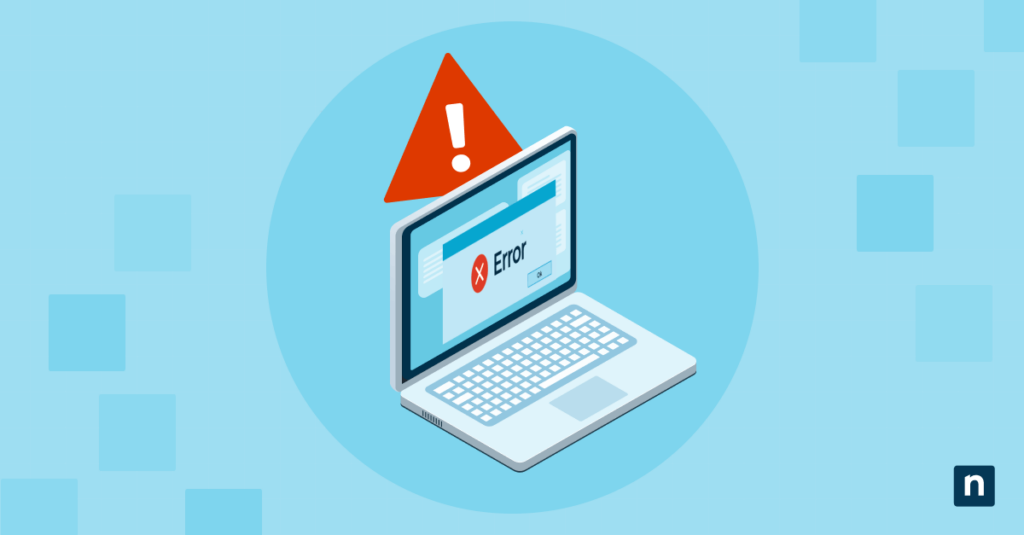Businesses depend on technology infrastructure for virtually every aspect of operations, from customer interactions to supply chain management. When an organization experiences a system downtime, the consequences extend far beyond the IT department.
IT crisis management has evolved from a technical function to a business-critical discipline that protects revenue, reputation, and customer relationships during technology emergencies.
The role of IT crisis management in modern business
System downtime can create cascading failures that quickly transform technical issues into business crises. When critical systems go offline, customer-facing operations halt, employees lose productivity, and revenue generation stops. A 2022 study found that 76% of organizations experienced downtime in 2021. Today, organizations experience a staggering 86 outages per year, although almost half of the executives surveyed have yet to take any action.
The financial impact of system downtime varies by industry and business model. E-commerce platforms might lose thousands of dollars per minute in direct sales, while manufacturing facilities face production delays, material waste, and overtime costs. Beyond immediate revenue loss, prolonged downtime damages customer confidence, potentially leading to long-term business relationship damage.
Common threats to IT infrastructure
Human error continues to cause significant incidents, from accidental data deletions to misconfigurations during system updates. Natural disasters present regional threats to physical infrastructure, while cyberattacks have evolved into sophisticated campaigns conducted by well-funded criminal organizations and nation-states. Supply chain cyberattacks target trusted vendors, allowing attackers to compromise multiple organizations through a single point of entry.
What makes IT crisis management effective?
Effective IT crisis management combines technical capabilities with organizational readiness. Organizations that successfully navigate technology crises share key characteristics: comprehensive response plans, cross-functional teams, regular practice, and continuous learning from incidents.
Risk assessment and vulnerability identification
Identifying potential crisis scenarios before they occur forms the cornerstone of effective management. Start with comprehensive infrastructure mapping that documents all critical systems, their interdependencies, and potential failure points. This visibility enables accurate risk assessment.
Vulnerability scanning tools should regularly evaluate systems for known security weaknesses, while penetration testing simulates real-world attacks to uncover hidden vulnerabilities. Conduct business impact analyses to quantify the operational and financial consequences of different failure scenarios:
- Implement continuous vulnerability scanning across all infrastructure components.
- Perform regular penetration testing with both automated tools and human testers.
- Review third-party dependencies and evaluate their security posture.
- Document single points of failure and develop mitigation strategies for each.
The most effective organizations supplement technical assessments with scenario planning workshops where teams explore potential system downtime events and their implications.
Incident response team structure
The structure of your incident response team will determine how effective you’ll be with managing technology crises. Make sure that each role has clearly defined responsibilities to prevent confusion during high-pressure situations.
Important roles include:
- The incident commander coordinates the overall response, making critical decisions and managing communication.
- Technical leads direct specialized teams focused on specific aspects of the incident, while business liaisons align response priorities with organizational needs.
- Communications specialists manage messaging, providing timely, accurate information throughout the crisis.
Building your IT crisis management playbook
A comprehensive IT crisis management playbook transforms abstract plans into concrete actions during system downtime. Your playbook should balance structure with flexibility, providing clear guidance while allowing teams to adapt to unique circumstances. Developing this resource requires input from technical teams, business units, and executive leadership.
Incident classification frameworks
Establishing clear incident classification frameworks helps organizations respond adequately to different events. Classification determines which resources are mobilized, who receives notifications, and what response procedures are followed. Without clear classification, organizations risk overreacting to minor incidents or under-responding to serious threats.
The most effective frameworks classify incidents based on their impact severity and scope, rather than their technical characteristics. Looking at business impact creates more meaningful distinctions between incident levels.
Your classification system should include these elements:
- Define 3-5 severity levels with clear criteria for each.
- Include both technical indicators and business impact measures.
- Establish notification requirements for each severity level.
- Document escalation procedures between levels as situations evolve.
- Establish specific response timeframes for each classification level.
Regular reviews keep your classification framework aligned with evolving business priorities and the technology landscape.
Response procedures for common cyberattacks
Cyberattacks require specialized response procedures that balance containment with evidence preservation. When developing response procedures, focus on both technical remediation and organizational communication. For ransomware incidents, immediate network segmentation prevents lateral movement, while clear decision frameworks guide difficult choices about potential ransom payments.
Data breaches demand rapid investigation to determine exposure scope, followed by methodical notification processes that comply with relevant regulations. Account compromises require credential resets across potentially affected systems, along with activity reviews to identify unauthorized actions. For distributed denial-of-service cyberattacks, traffic filtering and capacity scaling help maintain service availability.
IT crisis management best practices
Organizations that excel at IT crisis management share common practices that enhance their resilience. These best practices reflect lessons learned across industries and technology environments. When implementing IT crisis management best practices, focus on building capabilities that address your specific risk profile, rather than relying on generic recommendations.
Automated monitoring and early warning systems
Early detection dramatically improves crisis outcomes by expanding your response window. Comprehensive monitoring systems track infrastructure health, security events, and performance metrics to identify potential issues before they escalate into crises. Modern monitoring platforms combine traditional threshold-based alerts with anomaly detection capabilities.
Integration between monitoring systems and incident management platforms streamlines response activation. When monitoring systems detect potential crises, they should automatically generate incidents, notify relevant personnel, and provide contextual information that accelerates initial assessment.
Regular simulation drills
Theoretical plans rarely match what happens in reality. Regular simulation drills transform crisis management from a documentation-based approach into an organizational muscle memory. These exercises reveal gaps in procedures, tools, and team coordination that might remain hidden until an actual crisis occurs.
Tabletop exercises offer low-cost opportunities to practice response procedures without disrupting operations. These discussion-based sessions help teams understand their roles and practice decision-making in simulated scenarios. Technical simulations introduce actual system disruptions in controlled environments, allowing teams to practice hands-on response techniques.
Future-proofing your IT crisis management strategy
Technology environments are evolving rapidly, introducing new capabilities and risks. Future-proofing your IT crisis management strategy requires continuous adaptation to changing threat landscapes and technology platforms.
AI-powered predictive analytics
Artificial intelligence transforms crisis management from a reactive to a predictive approach by identifying potential failures before they occur. Machine learning models analyze historical incident data, system telemetry, and external threat intelligence to recognize patterns that precede system failures or security breaches. These capabilities provide vital early warnings that expand response windows.
AI systems can also accelerate incident investigation by automatically correlating events across disparate systems and suggesting potential root causes based on previous incidents. During active crises, AI assistants help responders by retrieving relevant documentation, suggesting mitigation strategies, and automating routine response tasks.
Cloud-based redundancy architecture
Cloud platforms offer unparalleled flexibility for building resilient infrastructure. Modern cloud-based redundancy architectures distribute workloads across multiple availability zones and regions, minimizing the impact of localized failures. These architectures automatically redirect traffic away from compromised resources, maintaining service availability during partial outages.
Implementing effective cloud redundancy requires a careful design of the architecture that balances cost considerations with resilience requirements. Multi-region deployments provide maximum protection but introduce complexity and additional expenses. Hybrid approaches that combine on-premises infrastructure with cloud-based disaster recovery capabilities offer pragmatic solutions for many organizations.
Minimize Downtime, Maximize Business Continuity
NinjaOne detects issues in real time, automates recovery, and reduces technician workload when every second counts. From ticket to recovery, it delivers seamless endpoint protection that keeps your systems running and your team focused. Start your free trial today.








